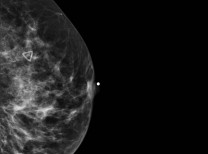
Each October during National Breast Cancer Awareness Month, women are reminded of the importance of having a mammogram to aid in early breast cancer detection.
Mammograms are essentially an X-ray of the breast while it is compressed. These images are used to detect abnormalities including breast cancer that may not be apparent to you or your doctor. Mammograms can assist in detecting cancer much earlier, when the prognosis for survival is much better and there are more treatment options. When breast cancer is found early, the five-year survival rate is 95 percent. Like almost all medical tests, mammograms are not 100 percent accurate, but they are the best method currently available for early detection of breast cancer.
While mammography has been shown to detect breast cancer early for many women, the recommendations regarding how often and when a woman should have a screening mammogram, vary.
“Ultimately, the decision about when and how often to have a mammogram rests with the woman and her physician,” said Laura Lee, M.D., medical director at the Comprehensive Breast Center at Desert Regional Medical Center. “The benefits of mammography for women of a certain age are well established and the risks are low.”
Breast cancer risk increases as a woman ages. The U.S. Preventive Services Task Force recommends biennial screening mammography for women aged 50 to 74 years. According to the American Cancer Society, women in their 20s and 30s should have a clinical breast exam at least once every three years and beginning at age 40, women should have a clinical breast exam and screening mammogram every year. Women should talk to their doctor and make an informed decision based on their family history, general health, and personal values.
For more information on mammography or to schedule a screening, call the Comprehensive Breast Center at Desert Regional Medical Center, with locations in Palm Springs and La Quinta, at 760-416-4700.
About Mammograms
There are two types of mammograms: screening and diagnostic. The main difference between a screening mammogram and a diagnostic mammogram is its purpose. A screening mammogram is used to detect breast abnormalities in women who show no cancer symptoms. Two images of each breast are taken to look for abnormalities. A diagnostic mammogram utilizes additional views and is used when a screening mammogram detects an abnormality, or when a woman complains of a breast lump, nipple discharge, breast pain or other symptom. Breast cancer survivors may need diagnostic mammograms in the first few years after surgery or treatment.
Women who are at a higher risk for breast cancer should talk to their doctors about whether a breast MRI might be helpful.










































Comments (0)